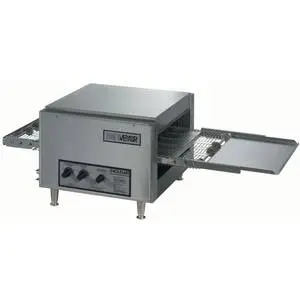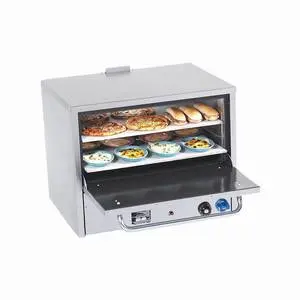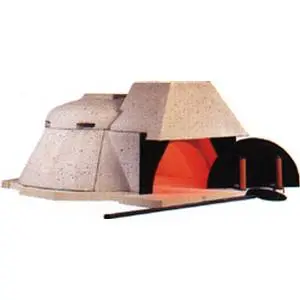Benefits and Commercial Applications for Pizza Ovens
Kitchen Applications
Pizza ovens are generally used to prepare pizza pies with meats, cheeses, and sauce toppings. Restaurant owners and chefs have slowly begun to use pizza ovens for non-pizza making purposes. The ability to steam mussels, finish steaks, and provide a smoky delicious flavor to meat, fish, and poultry allow restaurants to maximize the use of their pizza oven.
Types
Pizza ovens come in a variety of types including gas, electric, wood fired, conveyor and, brick lined. Each type brings its own texture and flavor to the pizza.
Gas Pizza Ovens are known to produce excellent flavor, especially when cooking with meats.
These ovens also allow the cook to control the temperature and heat of the cooking unit.
Electric Pizza Ovens are slightly more expensive, but allow less attention than gas ovens. With electric
ovens, there is no need to light a pilot or worry about carbon monoxide leaks. This is advantageous
for restaurants located in areas where gas lines are not commonly used.
Wood Fired Pizza Ovens can be manufactured as wood, gas, and wood/gas fired units. They are often made
out of natural materials including ceramic and metal. These ovens also produce a crispy texture and
bring out the flavor in meats and toppings.
Brick-Lined Pizza Ovens come in natural and LP gas powered models and are made with a stainless steel exterior and refractory brick interior. These ovens burn more evenly and retain the moisture in the crust better than electric and conveyor ovens. Similar to wood fired ovens, brick lined ovens also produce a crispy texture and enhance the flavor of pizza toppings.
Conveyor Pizza Ovens produce a large amount of pies at a very fast rate. They are privy to burning and over-cooking, but the conveyor belt in the oven allows a pizza to be cooked for as long or as short a time as necessary. This capability allows for the maker to monitor cooking speed and to modify pizzas to their customer’s preference.
Unique Features & Technology
Some kitchens use a heat exchanger that funnels the heat generated from the pizza oven to other
units in the kitchen. The heat exchanger warms water and appliances, and can lower operating costs
by up to 10%.
Capacity and Size
Pizza ovens are often sold as a half-size, single, double, or triple deck. Most types hold 1 or 2 pies at a time and cook up to 12 pizzas an hour.
Ovens range between 18" width x 15" depth x 8" height and 78" width x 43" depth X 66" height.
Energy Source
Gas ovens typically use propane or natural gas to operate. Conveyor ovens are able to run on both
electric or gas. Wood Fired and Brick Lined ovens can use wood, coal, or gas to cook pizzas.
Temperature Range
Most pizza ovens reach a temperature between 400°F and 700°F, with brick and wood fired
ovens reaching 1000°F.
Construction
Single deck ovens have one opening for the pizza, whereas double and triple deck ovens have
multiple openings. Conveyor ovens have a wider opening and use a conveyor belt to cook the pizza. Most units are made with a stainless steel exterior and include a dial to regulate the oven’s temperature.
Maintenance
When cleaning your oven, make sure to power down the entire unit and let it cool. Empty the crumb
trays and use a soft cloth to clean the outside of the oven.
If you have a conveyor oven, use a wire brush to brush the conveyor belts. This will prevent the belts
from deteriorating from the heat.
Manufacturers
ACityDiscount features a wide array of pizza oven manufactures including FMA, Comstock Castle, Bakers Pride, Cecilware, and Doyon Baking Equipment.
Recommended Optional Products
Pizza oven accessories include pizza pan stands, oven brushes, pizza stones, and pizza pan grippers.




